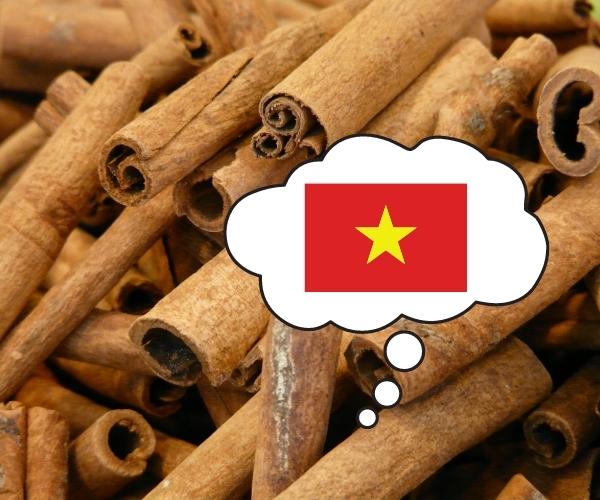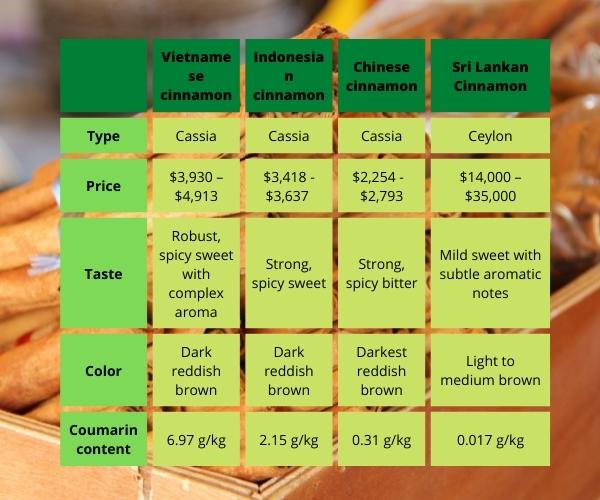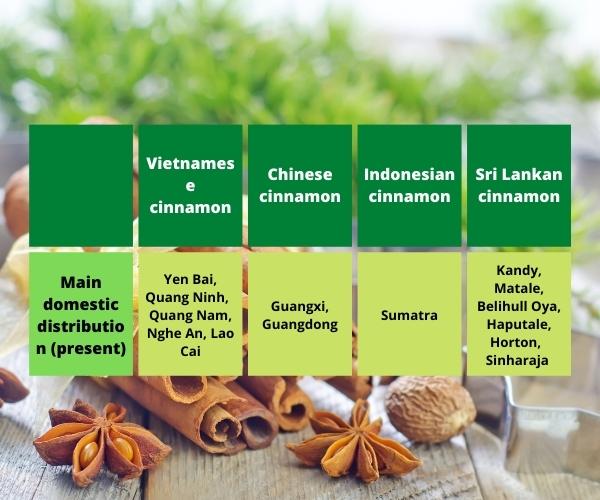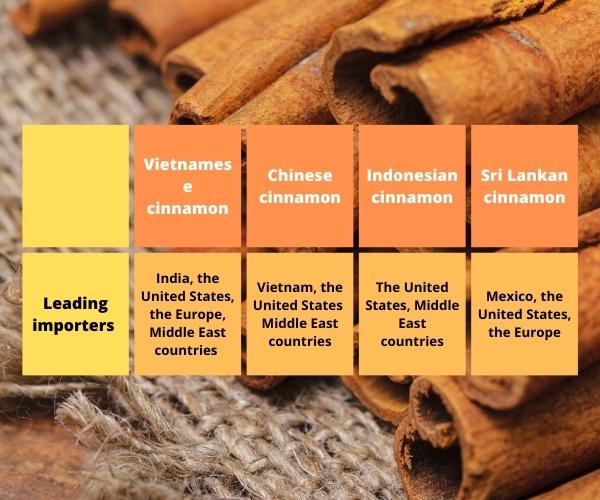Today’s cinnamon trade is undeniably on the rise. Have you ever wanted to know what makes Vietnamese cinnamon different from other cinnamon? The following article will assist you in differentiating Vietnamese cinnamon from other cinnamon types. The extent of other cinnamon in this article is cinnamon kinds from Indonesia, China, and Sri Lanka.
1.What is Vietnamese cinnamon?

- Vietnam cinnamon is a Cassia species of annual plant that is prevalent to mainland Southeast Asia. Cinnamon exports are now on the increase in Vietnam, which is one of the world’s major cinnamon producers.
- Vietnamese and Saigon cinnamon have a lot of myths. Saigon cinnamon is a brand of Vietnam cinnamon. On the other hand, it refers to the Cassia species that are identified with the Vietnamese nation.
- The misunderstanding between these two sorts dates back to a time when a brand known as “Saigon cinnamon” was sold to a foreign market. After that, the term “Saigon cinnamon” was coined to refer to Vietnamese cinnamon. Up to now, there have been several disagreements over the name and provenance of Vietnam cinnamon.
2.The comparison between Vietnamese cinnamon vs other cinnamon
In this section, we will distinguish the main differences of Vietname cinnamon and others based on three criteria including traits. distribution and importers.
2.1.Vietnamese cinnamon vs other cinnamon: Feature criteria

- Chinese cinnamon has the cheapest wholesale pricing when compared to other cinnamon varieties. Reason one is that Chinese cinnamon contains a small amount of Coumarin. Second, dealers report that China provides boiling cinnamon plants with only a trace of essential oil, and that the price is astonishingly low.
- The most expensive is Ceylon cinnamon from Sri Lanka. Due to the handmade manufacturing process and extremely low coumadin levels, the price is rather high.
- Vietnamese cinnamon offers a few advantages in general. The obvious one is the outstanding flavor, which has a strong flavor and a rich aroma. The high coumarin level, on the other hand, represents a significant drawback.
2.2.Vietnamese cinnamon vs other cinnamon: Distribution criteria
Overall, the majority of cinnamon varieties are similar.

- Nearly all of the domestic distribution spanning four countries has a warm subtropical to tropical climate with high temperatures and ample rainfall. Cinnamon grows best in humid locations with plenty of rain and yearly rainfall of more than 2000 mm.
- Cinnamon is mostly planted in these countries’ highlands and coastal regions. Cinnamon grows best above 1,000 meters or higher, therefore highland areas such as Yen Bai from Vietnam, or Kericin, Sumatra, Indonesia are perfect. On the other hand, coastal locations in China, such as Guangdong, and Vietnam’s Quang Ninh, help the dissemination of cinnamon considerably.
2.3.Vietnamese cinnamon vs other cinnamon: Importers criteria
Apart from the similarities, there are certain distinctions between Vietnamese cinnamon and normal cinnamon in aspects of foreign importers.

- Obvious parallels: For all four types of cinnamon, the United States is clearly the top export destination. North America is a great area for exporting cinnamon due to its large market and high demand. The most popular types are Vietnamese cinnamon and Indonesian one.
- Differences: While Mexico and European nations are the primary importers of Sri Lankan cinnamon, Middle Eastern nations make up a significant portion of the other three varieties’ total exports. Economics is the most convincing explanation for this phenomenon. Even if the price is expensive, affluent European countries are prepared to spend on Sri Lankan cinnamon. Meanwhile, Cassia cinnamon from Indonesia, Vietnam, and China is a good fit for the Middle East’s economy, which is diverse yet primarily undeveloped and developing.


 中文 (中国)
中文 (中国)